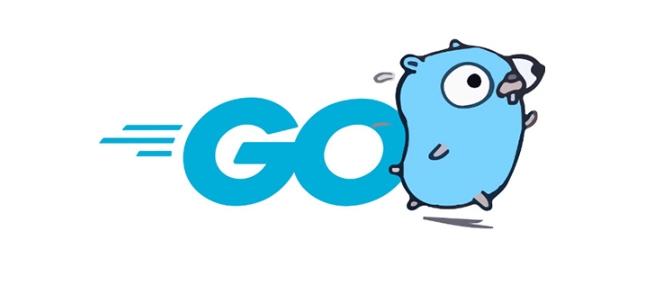Custom build tags in Go allow conditional compilation of files based on user-defined conditions; to use them effectively: 1) Define tags like //go:build enterprise at the top of files to control inclusion; 2) Use go build -tags enterprise to enable specific tags; 3) Apply tags for feature flags, environment-specific code, or edition variants; 4) Organize code with clear directory structure and consistent tagging; 5) Use boolean logic like && and ! in tags for complex conditions; 6) Test all tag combinations to avoid integration bugs; 7) Document tags and combine with -ldflags for dynamic values; 8) Avoid overuse and ensure a blank line after build tags to prevent parsing errors, ensuring maintainable and efficient build variants.

Go’s build constraints (also known as build tags) are a powerful way to control which files are included in a build based on environment, platform, or custom conditions. While Go supports built-in tags like //go:build linux or //go:build amd64, you can also create custom build tags to manage feature flags, enable/disable debug code, or support different build variants (e.g., enterprise vs. community editions).

Here’s how to design and use a custom build tag system effectively.
? Understanding Custom Build Tags
Custom build tags are identifiers you define to conditionally include or exclude Go source files during compilation. They work at the file level — a file with a specific build tag is only compiled when that tag is explicitly enabled.

They are written as comments at the top of a .go file:
//go:build enterprise // build enterprise
?? Note: The
//go:buildsyntax is the modern standard (Go 1.17 ), but older// buildstyle is still supported.
If you run:
go build -tags enterprise
Only files with //go:build enterprise (or other satisfied conditions) will be included.
?? Use Cases for Custom Tags
Feature Flags
Enable premium features only in certain builds://go:build premium package main func init() { registerFeature("cloud_sync", true) }Environment-Specific Code
Separate dev, staging, and production logic://go:build debug log.Println("Debug mode enabled")Platform or Vendor Variants
Build different versions of your app://go:build community const edition = "Community" //go:build enterprise const edition = "Enterprise"
Excluding Test or Stub Code in Production
//go:build !production func MockAuthService() AuthProvider { ... }
? Organizing Your Code with Build Tags
To keep things maintainable:
- Group related files using consistent tags.
- Avoid scattering the same tag across unrelated files.
- Use clear, descriptive tag names:
dev,prod,enterprise,mock,cgo, etc.
Example directory structure:
/cmd/ /pkg/ /features/ ├── cloud_sync.go // //go:build premium ├── audit_log.go // //go:build enterprise └── mock_auth.go // //go:build testmock
You can even use multiple tags:
//go:build enterprise && !no_logging
Build with:
go build -tags "enterprise no_logging"
This excludes files requiring !no_logging.
? Best Practices
- ? Always validate tag logic — complex boolean expressions can backfire.
- ? Document your tags in
README.mdor aBUILDING.mdfile. - ? Test all build variants:
go test -tags enterprise ./... go test -tags premium ./...
- ? Avoid overuse — too many tags make code hard to follow.
- ? Combine with ldflags for dynamic values when possible:
go build -ldflags "-X main.Edition=Enterprise" -tags enterprise
This lets you inject values without compile-time branching.
? Common Pitfalls
Forgetting the blank line after build tags (required by parser). ? Correct:
//go:build enterprise package main
Misunderstanding boolean logic:
-tags "a b"meansa OR b, notAND.
To require both: use//go:build a && b, then-tags "a b".Not testing all combinations — subtle bugs appear when features interact.
? Example: Community vs Enterprise Build
community/version.go
//go:build !enterprise package main const Edition = "Community"
enterprise/version.go
//go:build enterprise package main const Edition = "Enterprise"
Build community:
go build -o app-comm .
Build enterprise:
go build -tags enterprise -o app-ent .
The correct file is picked automatically.
Basically, custom build tags are a lightweight, compile-time feature toggle system. Used wisely, they help you ship different versions of your Go app without runtime overhead or conditional sprawl.
Just remember: tags control file inclusion, not code inside a file. For finer control, combine them with if statements or configuration.
The above is the detailed content of Creating a Custom Build Tag System in Go. For more information, please follow other related articles on the PHP Chinese website!

Hot AI Tools

Undress AI Tool
Undress images for free

Undresser.AI Undress
AI-powered app for creating realistic nude photos

AI Clothes Remover
Online AI tool for removing clothes from photos.

Clothoff.io
AI clothes remover

Video Face Swap
Swap faces in any video effortlessly with our completely free AI face swap tool!

Hot Article

Hot Tools

Notepad++7.3.1
Easy-to-use and free code editor

SublimeText3 Chinese version
Chinese version, very easy to use

Zend Studio 13.0.1
Powerful PHP integrated development environment

Dreamweaver CS6
Visual web development tools

SublimeText3 Mac version
God-level code editing software (SublimeText3)

Hot Topics
 How does the switch statement work in Go?
Jul 30, 2025 am 05:11 AM
How does the switch statement work in Go?
Jul 30, 2025 am 05:11 AM
Go's switch statement will not be executed throughout the process by default and will automatically exit after matching the first condition. 1. Switch starts with a keyword and can carry one or no value; 2. Case matches from top to bottom in order, only the first match is run; 3. Multiple conditions can be listed by commas to match the same case; 4. There is no need to manually add break, but can be forced through; 5.default is used for unmatched cases, usually placed at the end.
 How to use reflection in Go?
Jul 28, 2025 am 12:26 AM
How to use reflection in Go?
Jul 28, 2025 am 12:26 AM
Usereflect.ValueOfandreflect.TypeOftogetruntimevaluesandtypes;2.Inspecttypedetailswithreflect.TypemethodslikeName()andKind();3.Modifyvaluesviareflect.Value.Elem()andCanSet()afterpassingapointer;4.CallmethodsdynamicallyusingMethodByName()andCall();5.R
 how to break from a nested loop in go
Jul 29, 2025 am 01:58 AM
how to break from a nested loop in go
Jul 29, 2025 am 01:58 AM
In Go, to break out of nested loops, you should use labeled break statements or return through functions; 1. Use labeled break: Place the tag before the outer loop, such as OuterLoop:for{...}, use breakOuterLoop in the inner loop to directly exit the outer loop; 2. Put the nested loop into the function, and return in advance when the conditions are met, thereby terminating all loops; 3. Avoid using flag variables or goto, the former is lengthy and easy to make mistakes, and the latter is not recommended; the correct way is that the tag must be before the loop rather than after it, which is the idiomatic way to break out of multi-layer loops in Go.
 How to handle timeouts in Go?
Jul 27, 2025 am 03:44 AM
How to handle timeouts in Go?
Jul 27, 2025 am 03:44 AM
Usecontext.WithTimeouttocreateacancellablecontextwithadeadlineandalwayscallcancel()toreleaseresources.2.ForHTTPrequests,settimeoutsusinghttp.Client.Timeoutorusecontextviahttp.NewRequestWithContextforper-requestcontrol.3.Ingoroutineswithchannels,usese
 Using the Context Package in Go for Cancellation and Timeouts
Jul 29, 2025 am 04:08 AM
Using the Context Package in Go for Cancellation and Timeouts
Jul 29, 2025 am 04:08 AM
Usecontexttopropagatecancellationanddeadlinesacrossgoroutines,enablingcooperativecancellationinHTTPservers,backgroundtasks,andchainedcalls.2.Withcontext.WithCancel(),createacancellablecontextandcallcancel()tosignaltermination,alwaysdeferringcancel()t
 Efficient JSON Parsing and Manipulation in Go
Jul 27, 2025 am 03:55 AM
Efficient JSON Parsing and Manipulation in Go
Jul 27, 2025 am 03:55 AM
UsestructswithPERJSontagsFeRpredictabledatoensurefast, safeparsingwithcompile-timetypesafety.2.avoidmap [string] interface {string] interface {string] interface {string] interface {string] interface {string] interface {string] interface {string] interface {string] interface {string] interface {string] interface {string] interface {string] interface {string] interface {string] interface {string] interface {string] interface {string] interface {string] interface {string] interface {string] interface {string] interface {string] interface {string] interface {string] interface {string] interface {string] interface {string] interface {string] }duetoreflectionoverheadandruntimetypeassertionsunlessdealingwithtrulydynamicJSON.3.Usejson.RawMessagefordeferredorselectivep
 Building a GraphQL Server in Go
Jul 28, 2025 am 02:10 AM
Building a GraphQL Server in Go
Jul 28, 2025 am 02:10 AM
InitializeaGomodulewithgomodinit,2.InstallgqlgenCLI,3.Defineaschemainschema.graphqls,4.Rungqlgeninittogeneratemodelsandresolvers,5.Implementresolverfunctionsforqueriesandmutations,6.SetupanHTTPserverusingthegeneratedschema,and7.RuntheservertoaccessGr
 Performance benefits of switching to Go
Jul 28, 2025 am 01:53 AM
Performance benefits of switching to Go
Jul 28, 2025 am 01:53 AM
Gooffersfasterexecutionspeedduetocompilationtonativemachinecode,outperforminginterpretedlanguageslikePythonintaskssuchasservingHTTPrequests.2.Itsefficientconcurrencymodelusinglightweightgoroutinesenablesthousandsofconcurrentoperationswithlowmemoryand







